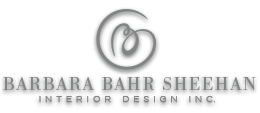
The world of residential lighting is undergoing a revolution. Change is coming and it’s good! The new frontier of LED lighting is more energy efficient, more flattering to fabrics and faces, and treats our artwork more kindly too. What’s not to love? That you have to be an engineer, lighting expert or a computer geek just to figure out how to turn the lights off when you leave a room? No fun. Not funny. But revolutions take time, not all the parts and pieces work together just yet but there are a few companies who are figuring it out. Spend the extra money to work with them, buy their products. But first, go armed with a little knowledge about this new type of light.
Lumens vs. watts?
Remember apples to oranges? That’s what this comparison is all about. If you liked 100 watt bulbs, (which you can’t get any more by the way) and are looking for the equivalent in an LED bulb, you’d be looking for approximately 25 watts but that’s not the only thing to consider. LED bulbs come in a variety of temperatures that greatly impact the quality of the light from the fixture and their effect on the colors in the room.
So if you want blue to look like blue, not blue/black and red to look like red, read on.
Fact vs. Fiction about LED lighting
Fiction: LED bulbs last forever. Forever is a long time. Nothing lasts forever. LED dedicated fixtures meaning these are actual made for LED fixtures, well the bulbs can last up to 50,000 hours. That’s a long time, it’s not forever. LED bulbs in incandescent fixtures (a retrofit), these bulbs last longer than LED but not 50,000 hours.
Fact: LED fixtures with LED bulbs deliver approximately 4 times the light output and use less than half the electricity of standard incandescent fixtures and for a significantly longer time frame. In addition, the spent fixtures and bulbs can be disposed of safely and in an eco-friendly way (unlike the ‘F’ word, fluorescent). They are here to stay.
Fiction: LED lights are ‘cold’ lights. Only if you pick the wrong temperature bulb. The ‘Kelvin’ scale rates the color temperature in comparisons we have come to know. If you want a warm light? Choose a medium to low temperature (1700-3000) and if you want a cooler light, choose a higher number but the majority of the bulbs we will use in a residential setting are 2700 or 3000 or 3300.
Fact: Automation with LED dedicated fixtures is still a ‘work in progress’. Unfortunately this is true. Not every fixture (recessed lights, surface mounted lights, pendant lights, chandeliers) can be dimmed with readily available controls. It’s like the company that makes towel bars that you like, with robe hooks that you like but they don’t make a toilet paper holder. Really? Then why would I use that line? Hopefully the manufacturers realize this is a problem and are hard at working making dimmers, and apps on our phone that enable us to use technology to make our lives easier, light our homes and also use (a lot) less energy.
Fiction: LED bulbs cost a lot. Upfront, yes. But when you amortize the life of the bulb, the energy used and even the additional car trips to buy more incandescent bulbs, then no, they don’t cost a lot. They cost very little.
The thing I like most about being a Designer?
I get to keep learning about things, lighting, technology, automation and that keeps it interesting. I am still learning about the new lighting; I will keep you posted!





